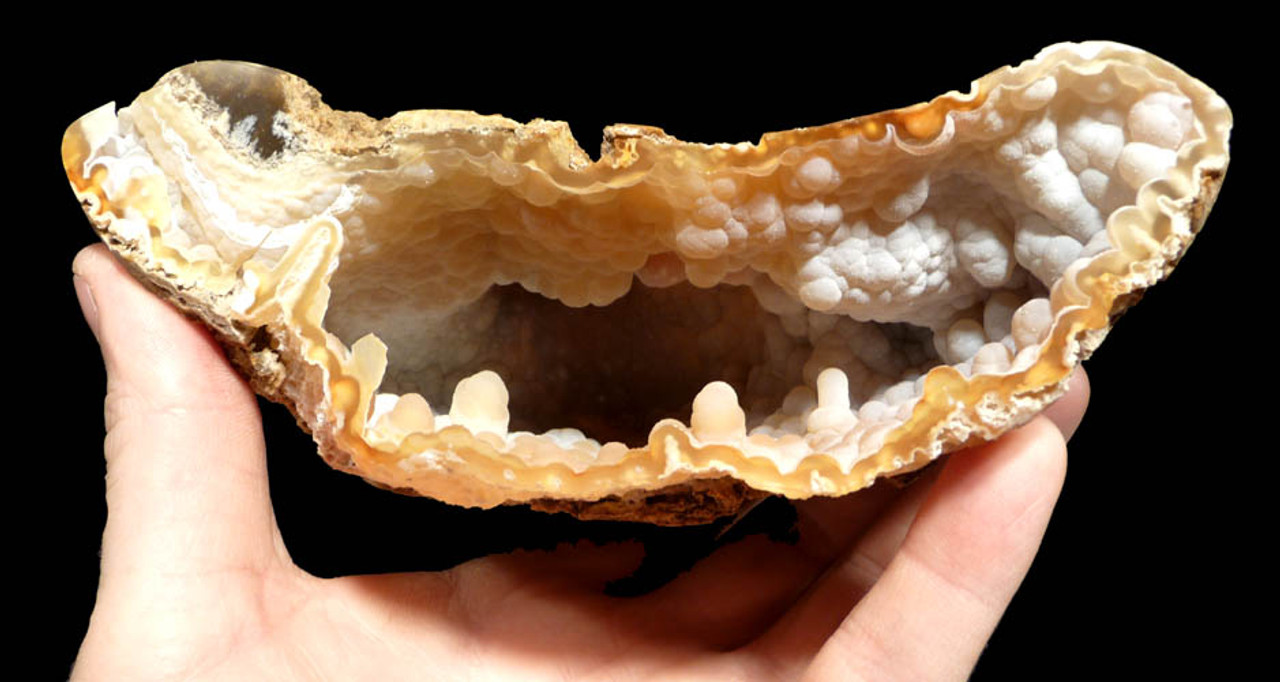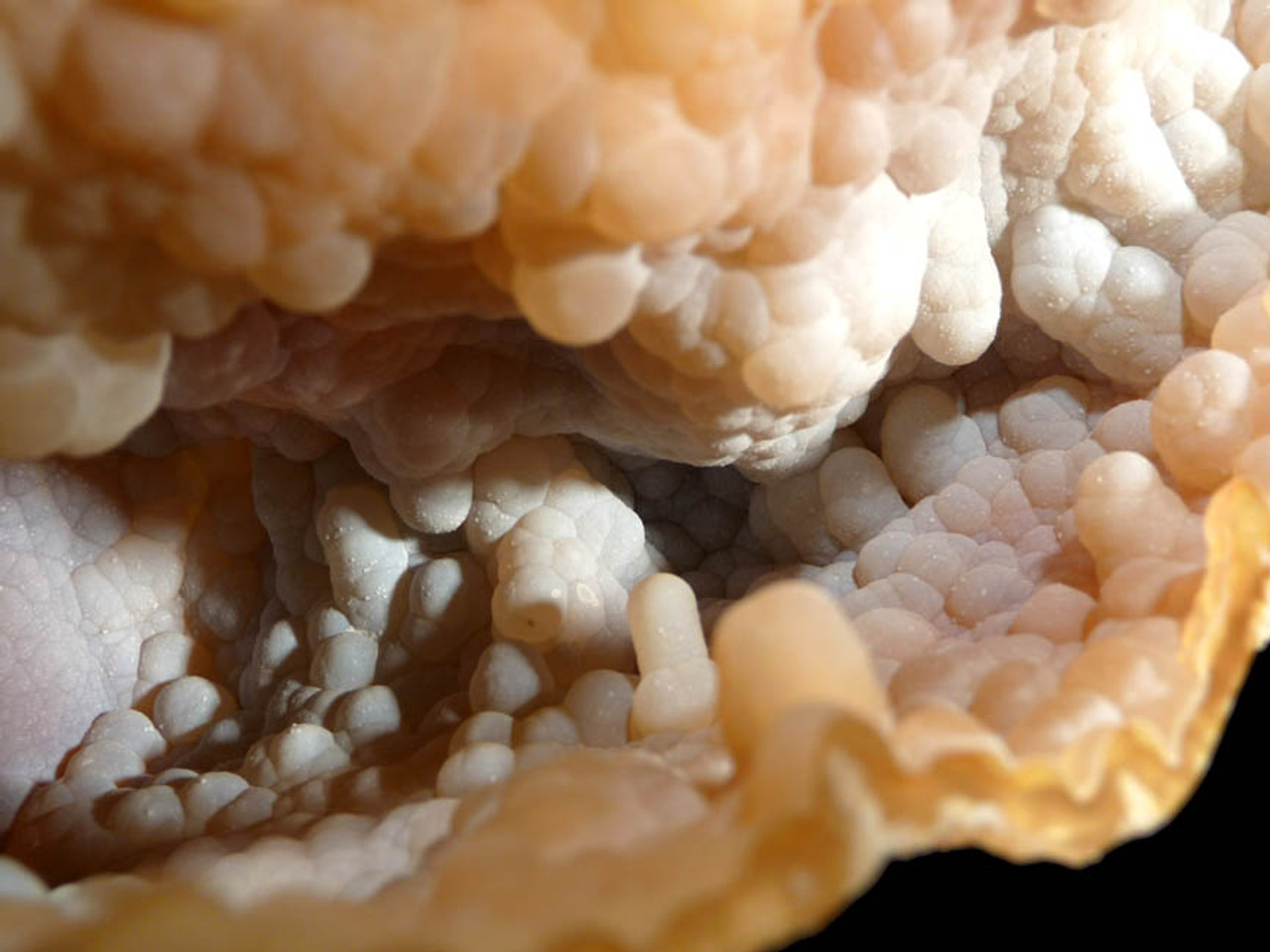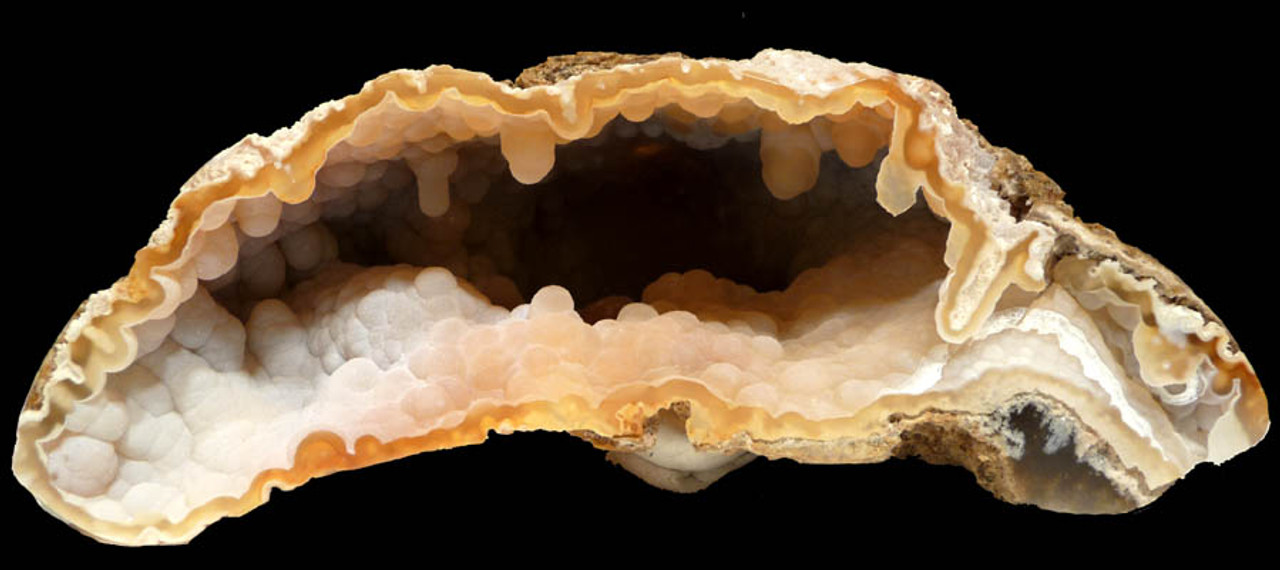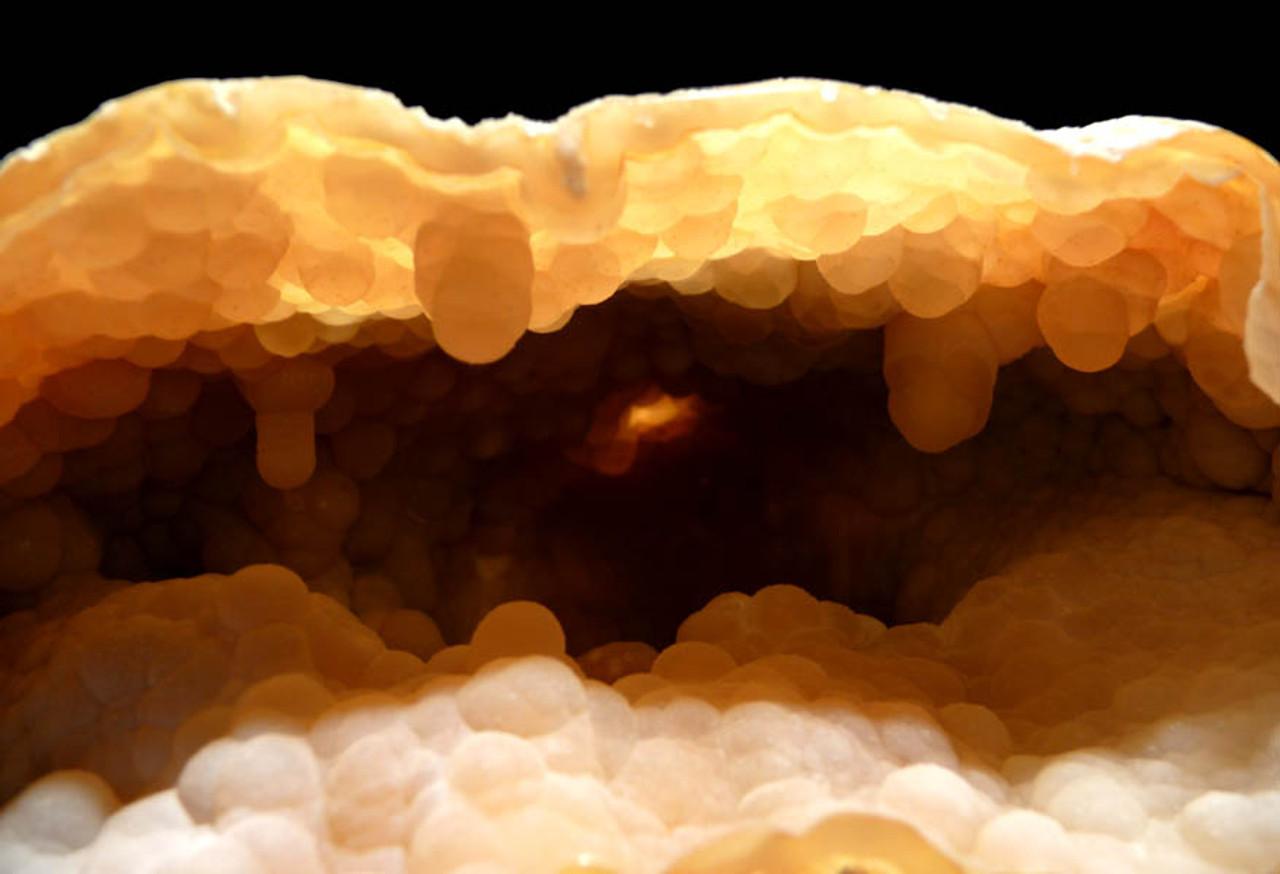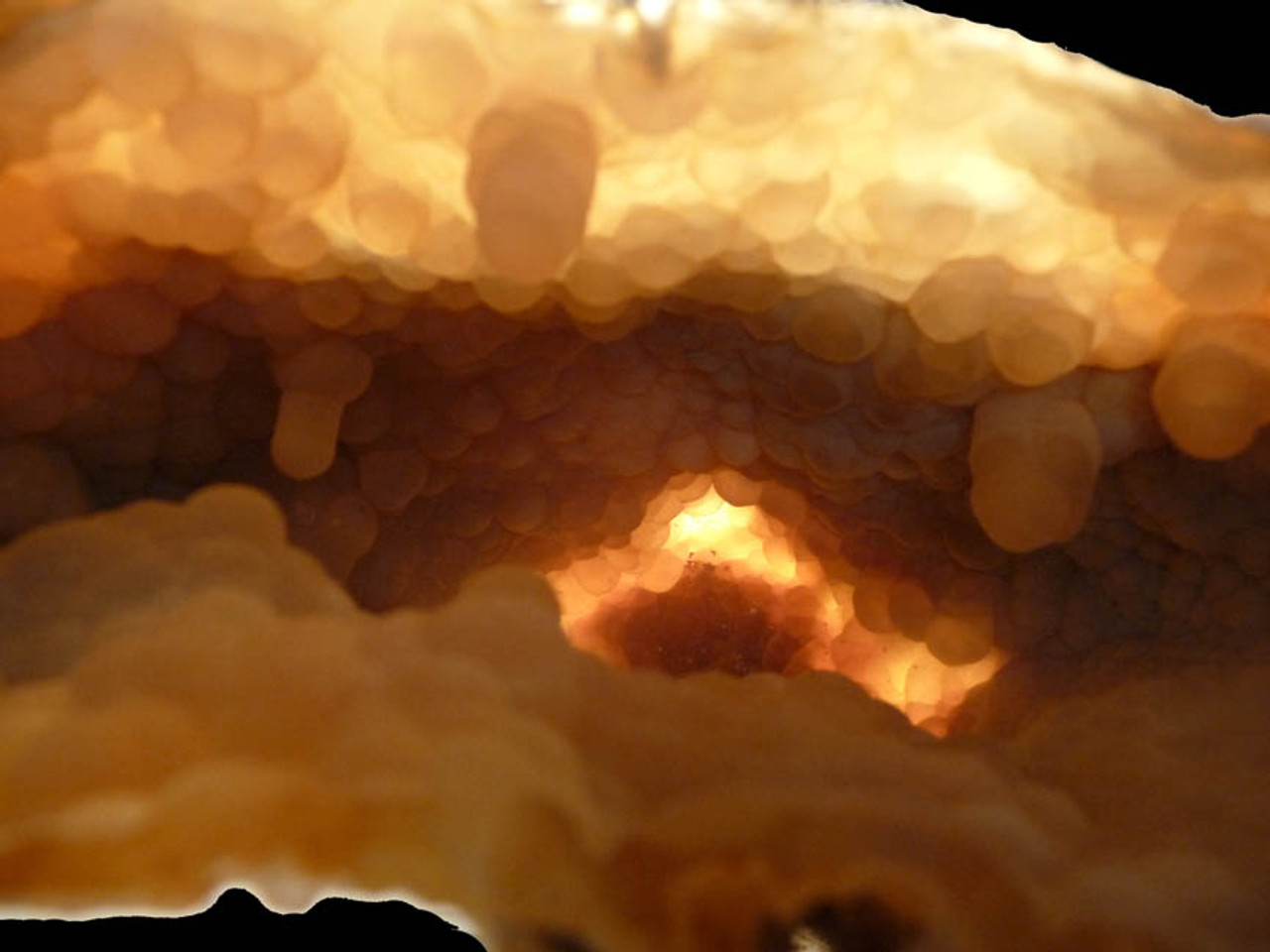Product Description
Agatized fossil coral is highly prized by not only fossil collectors, but by gem and mineral collectors, as well. Exquisite forms from Florida are especially in demand as the state produces some of the finest examples of this geological oddity in the entire world. The majority of agatized coral that is collected is either solid inside when sliced or it possesses a drab and rather uninteresting structure to its internal cavity. This remarkable specimen is VERY rare and far exceeds the beauty, color and internal crystalline structures of most agatized coral pieces that are found.
The specimen being offered here is RARE in that it has an entire internal cavity lined with TRANSLUCENT powder blue-white botryoidal (globular) structures of chalcedony. Nearly the entire geode is solid chalcedony in that it glows when lit from behind. The globular bubble-like crystal structures appear as if they are given a light dusting of velvety blue-white powder. Hundreds of agatized coral specimens must be found and sliced to even find one like this as most are not hollow nor attractive. The inside of this specimen resembles a miniature cave lined with bubbles of white velvet agate. Agatized coral of this quality is so rare that usually it is cut up and used in very expensive custom jewelry pieces. As a complete crystal specimen, it is worth even more in its natural state.
HISTORY
Agate, also known as chalcedony, is a type of cryptocrystalline quartz (SiO2). Under unique geological conditions, prehistoric corals and mollusks can fossilize by being replaced with agate from silica-rich ground water percolating through limestone. The Florida Legislature designated agatized coral as the Florida State Stone in 1979. The statute describes it as “a chalcedony pseudomorph after coral, appearing as limestone geodes lined with botryoidal agate or quartz crystals and drusy quartz fingers, indigenous to Florida." Agatized coral occurs in a variety of colors, typically gray, brown, black, yellow, white, and on rare occasion red. The majority of Florida’s agatized coral formed in Oligocene-Miocene Hawthorn Group sediments. Fossil agatized coral is occasionally dredged up in the Tampa and Clearwater areas but also occurs in limestones along the Econfina, Withlachoochee and Suwannee Rivers.
Fossil corals were simple marine invertebrates that possessed a sac-like body called a polyp with a mouth and tentacles. As carnivores, they would immobilize or kill their prey with their stinging tentacles then swallow their prey and later expel the wastes through the same mouth. They formed a dense outer skeleton of calcium carbonate which, when living in large colonies of thousands of cloned individuals, formed a massive structure. The complex folds in their stomach cavity can be seen in the wondrous detail left behind in their skeletons. Modern corals today share a symbiotic relationship with algae that covers their body tissue. The algae supplement the coral with oxygen which most likely was the case in prehistoric times, as well.
Prehistoric corals are believed to have thrived in the same environments that modern corals prefer - clean, warm oceans of normal salinity levels. Solitary corals were present in oceans of soft, muddy bottoms while horn corals and colonial corals preferred hard sea floors to attach themselves.
 US DOLLAR
US DOLLAR
 EURO
EURO
 AUSTRALIAN DOLLAR
AUSTRALIAN DOLLAR
 CANADIAN DOLLAR
CANADIAN DOLLAR
 POUND STERLING
POUND STERLING

